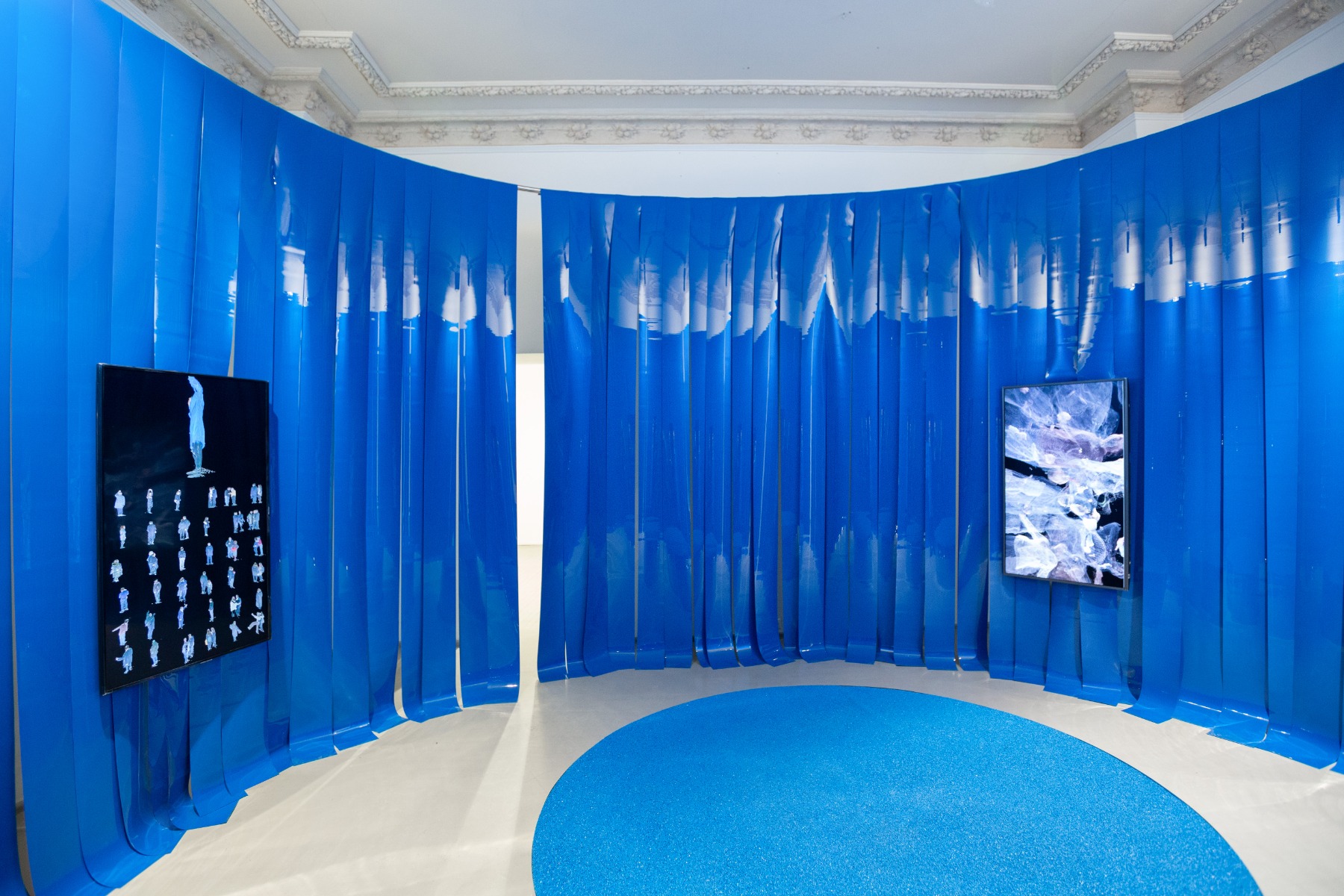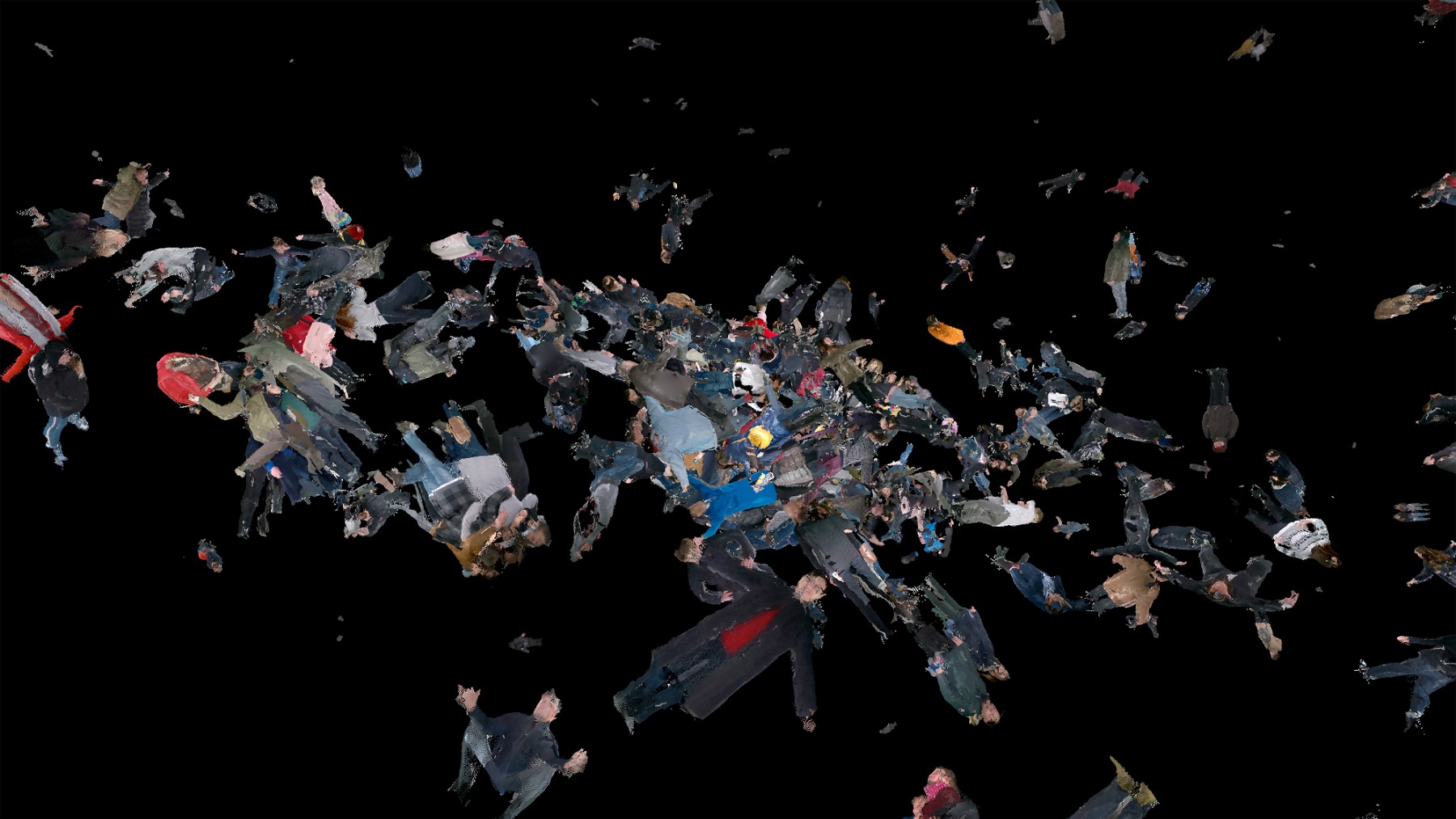
A heterotopian point of view
An express-interview with Julijonas Urbonas
Lithuanian artist Julijonas Urbonas is internationally acclaimed and well known for his interest in combining visual arts, science and space studies. One of his most interesting and speculative works is “Euthanasia Coaster” (2010), a high-class, designed death machine in the form of a roller coaster. Having been exhibited in various exhibitions around the world, including the first Riga International Biennial of Contemporary art in 2018, the roller coaster has now been a part of the Lithuanian art display at the National Gallery of Art in Vilnius since summer 2019.
In an interview almost two years ago, Julijonas first told me about his new project titled “A Planet of People” – an experimental artificial planet completely made from living human bodies. Now, a new version of this work is going to be created for the exhibition space of the Collective center for contemporary art, located in Edinburgh’s City Dome, and shown as part of the Edinburgh International Science Festival 2020 (April 4 – 19). Right after that, “A Planet of People” will travel to the Venice Architecture Biennale where it will be shown as the special program of the Lithuanian Space Agency, founded by Urbonas himself.
In the following express-interview, the artist reveals nuances behind the concept of this work and explains the reality of “A Planet of People”.

Your work “A Planet of People” is an artistic and scientific feasibility study – an artificial cosmic body entirely made from human bodies. What encouraged you to build such a project?
The idea was part of a larger project, “Cosmic Lithuanias”, in which I set out to rethink the Lithuanian space programme. One of the key aims of the project was to spark a critical discourse about Lithuanian culture and social imagination in space. Such topics are absolutely absent here – as though culture terminated at the Karman line, a borderline that lies at an altitude of a hundred kilometres above sea level, and marks the boundary between the Earth’s atmosphere and outer space.
The project involved many ideas, from organising the Kosmica Biennial (with the Kosmica Institute, Berlin) to the production of an extra-terrestrial vodka (in collaboration with the astro-botanist Danguolė Švegždienė). Many of these ideas ended up in a drawer, while “A Planet of People” kept recurring under various circumstances (in conversations with scientists and similar encounters). It is very provocative and radically different from any other space programmes and visions, so I thought – what could be better than inspiring cosmic imagination and an awareness of a national extraterrestrial identity?
What is the intention of this study, and how does it connect the scientific approach that you are interested in with your artistic practice and aesthetics?
If you look at the core of any of my projects, you’d come across nothing but a simple trajectory – a laconic choreographic scheme that has not been set in motion before. The very first step in my projects is coming up with a way that would push the human body into the submission of such a new realm of motion. It is only then that I start looking into various – mostly aesthetic and ethical – implications that the particular trajectory provokes. Often those choreographies are extreme, pushing the limits of the body and imagination. “The extreme” is kind of my choreographic style. So this is pretty much the essence of my intentions.
However, all of my projects are never completed and are under constant development – as they travel through time and space, their realities and intentions change. That is the case for “A Planet of People” as well. Having exhibited and worked on the idea for a few years, it also turned out to be an effective narrative echoing quite a number of urgent ethical, aesthetic and political issues that have something to do with the new space age. The latter has been coined within the last five or so years mostly due to the emergence of a space economy, the increased internationalisation of space activities, the re-emergence of space colonialism, and the establishment of the astro-anthropocene. But I would also expand the list with one specific signpost that defines the new cosmic era but also crucially informs the project: the increase of disciplines that have attached the prefix “astro-” to themselves. Such fields as “astroarts”, “astroanthropology”, “astroethics”, and “astropolitics” radically revisit themselves through the framework of the extreme.
That is how the simple motion scheme of moving human bodies from one location to another has become a very complex and complicated intellectual choreography.
3D sketch - closeup
Somehow, “A Planet of People” seems like a metaphor for a utopian parallel reality. How open for interpretation is this work?
The reality of “A Planet of People” is neither utopia nor dystopia, but heterotopia – that is, many different realities at once. You may consider it as a survivalist megaproject, a self-extinctionist “gravespace”, a monument or fossil for humanity (made of humanity), a bio-sculpture of cosmic scale, an inversion of Vitruvian architecture, an extraterrestrial dance piece, an astronomical insemination experiment, an ultimate return to the origins: stardust…
How would you define the concept of utopia in the context of contemporary art?
I’d say that the idea of utopia belongs to modernism, and the idea of dystopia belongs to contemporary art. We live in an era obsessed with apocalyptic ideas and eschatological thinking. In times where extinction is a matter not of speculative fiction, but of daily experience, the arts push the tolerance level of apocalyptic “graphic language” to the extreme, and thanks to this, what used to be “disturbing” is now considered “mundane”. Confusing the differences between what could be considered utopian and what could not, art teaches us to face and accept the uncomfortable, the alien, the other.

“A Planet of People” will be shown as part of the Edinburgh International Science Festival 2020. How important, to your mind, is it to talk about science directly through the prism of visual art?
For me, science and art enrich each other with their peculiar methodologies, epistemologies, tools for imagining, and critical thinking. Often in my projects that are hypothetical, I employ a scientific vocabulary to add the appearance of realness, viability and credibility. A little bit like what good sci-fi does. Today, for many science is a synonym for “real”, a sort of epistemological engine of truth. However, as we know now very well, it is nothing but a unique flux of (inter)subjective, cultural, political, sexual, economical, and technological forces. In addition to that, science is largely reductionist, transforming reality into symbols, words, numbers and schemes. The dialogue between science and art brings those issues into the discursive and experiential realm and complicates what is considered real and what is not.
Later on this project will travel to the 17th Venice Architecture Biennale as the special programme of the Lithuanian Space Agency. Could you tell me a bit about the LSA?
First and foremost, I established the agency to deal with space culture and astro-art in Lithuania. The LSA acknowledges the radical other-worldliness of the cosmos and aims to redefine the extremes of the living experience and imagination. Currently it is specifically focused on exploring the role of architecture and its possibilities in the new space age, both within the context of Lithuania and on a global scale. Soon you’ll be able to find out more about it at Lithuanian Space Agency.

It appears that your work ideally matches the title of the Venice Architecture Biennale 2020: “How will we live together?”. Could it be that “A Planet of People” is the answer to this almost rhetorical question proposed by the Biennale’s curator, Hashim Sarkis?
Take a large population of humans, strip them of all social, racial, cultural, political, sexual, and economical constructs, and bring them together so that they stay in close proximity for a substantial amount of time. That would be the ultimate revision of human architecture.